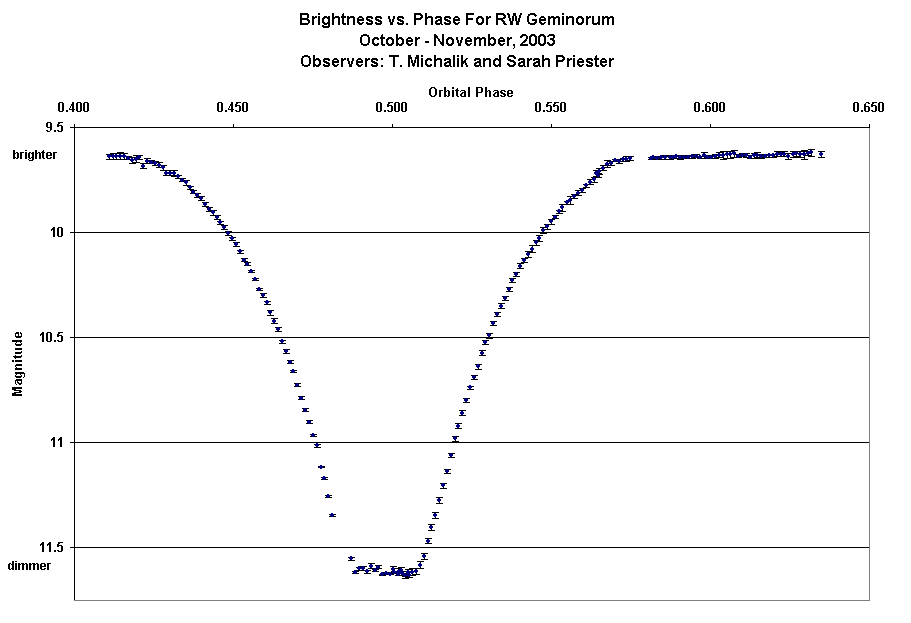
THE ECLIPSING BINARY STAR RW GEMINORUM
RW Geminorum is an Algol-type eclipsing binary. Brighter star A has a mass of 4.97 Solar Masses, a radius of 3.69 Solar Radii, a surface temperature of 12,390K, and a bolometric luminosity of 285.25 Solar Luminosities. Dimmer star B has a mass of 2.24 Solar Masses, a radius of 4.67 Solar Radii, a surface temperature of 6,200K, and a bolometric luminosity of 28.47 Solar Luminosities. During the primary eclipse the smaller diameter, brighter star is entirely behind the larger diameter, dimmer star. This primary eclipse totality time lasts for more than an hour. Senior physics major, Sarah Priester, and I decided to observe the primary eclipse during the fall of 2003. Since the complete orbital period of RW Geminorum is 2.8654972 days, we decided there would not be enough observing time in the fall semester to capture the light curve for the entire orbital period. Therefore, we set out to observe only the primary eclipse. This required about 15 hours of observing.
During October and November of 2003 we observed RW Geminorum on 3 different nights. We made 189 V-filter CCD images, one every 5 minutes during each session. The exposure times varied between 60 seconds, and 240 seconds.
The light curve shown below clearly shows the primary eclipse. The duration of the flat total eclipse portion is one hour, 22 minutes with an uncertainty of about 5 minutes. The two unfortunate gaps in the otherwise beautiful curve are caused by the annoying inability of our German equatorial telescope mount to continuously follow celestial objects as they cross the meridian. At two meridian crossings no images could be taken while the telescope slewed from one side of the pier to the other.
